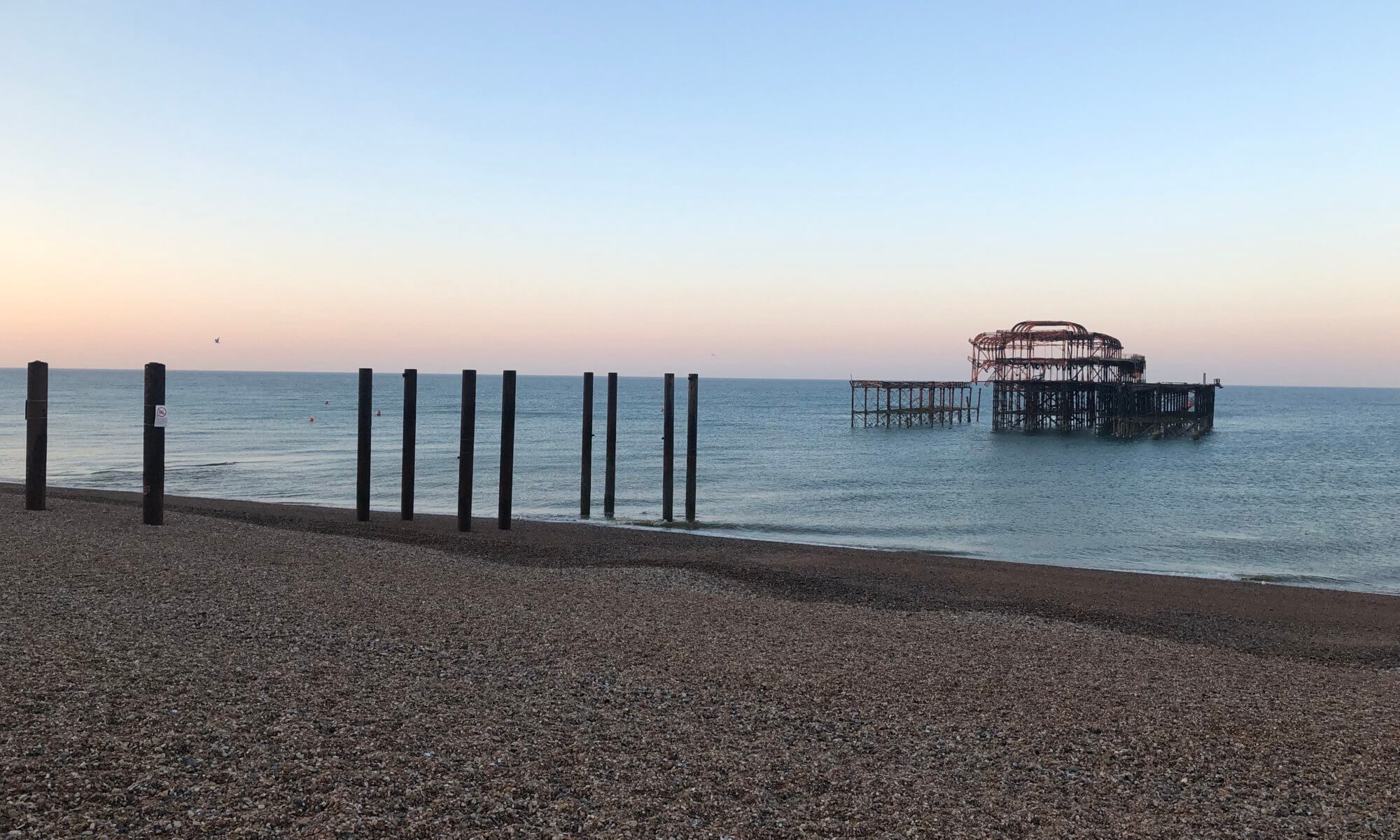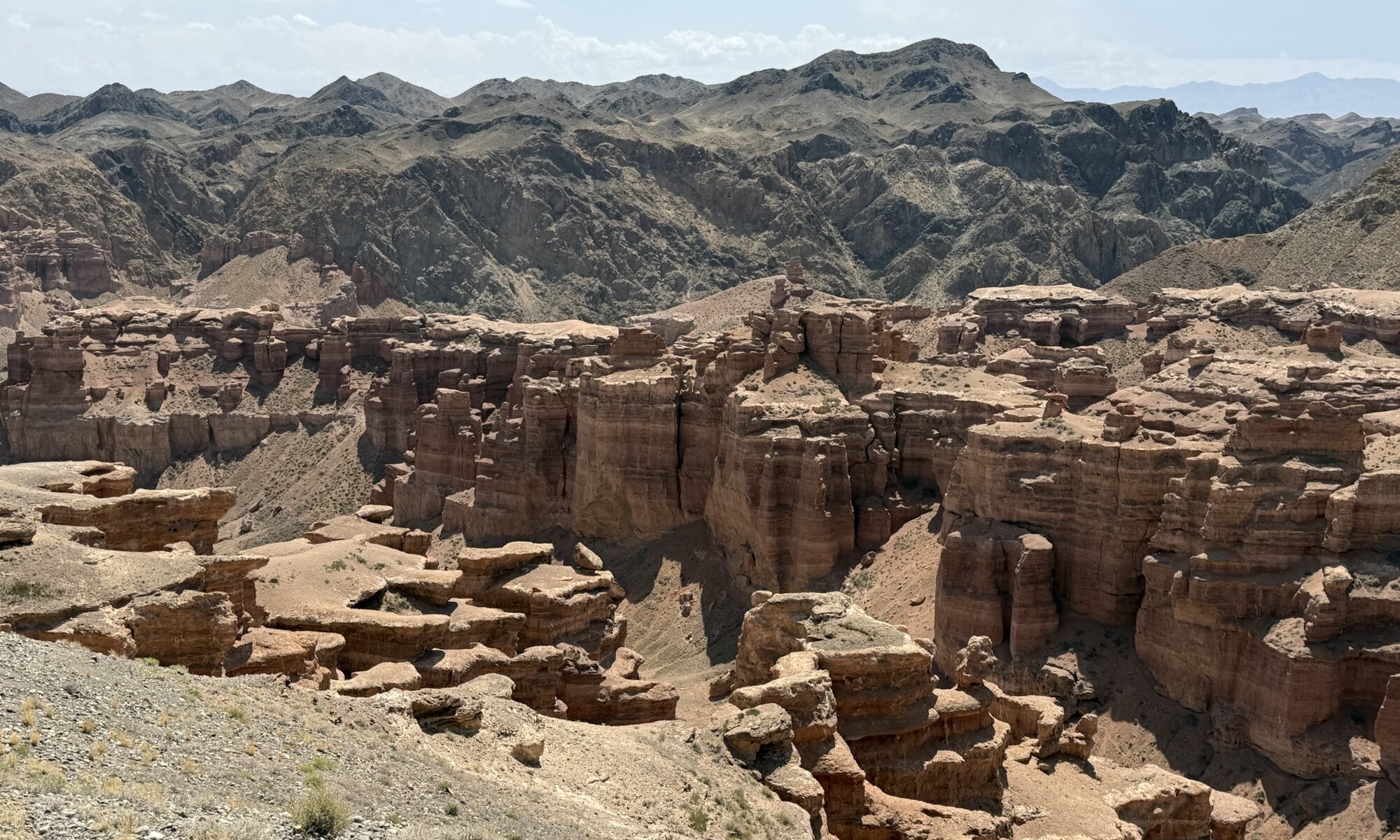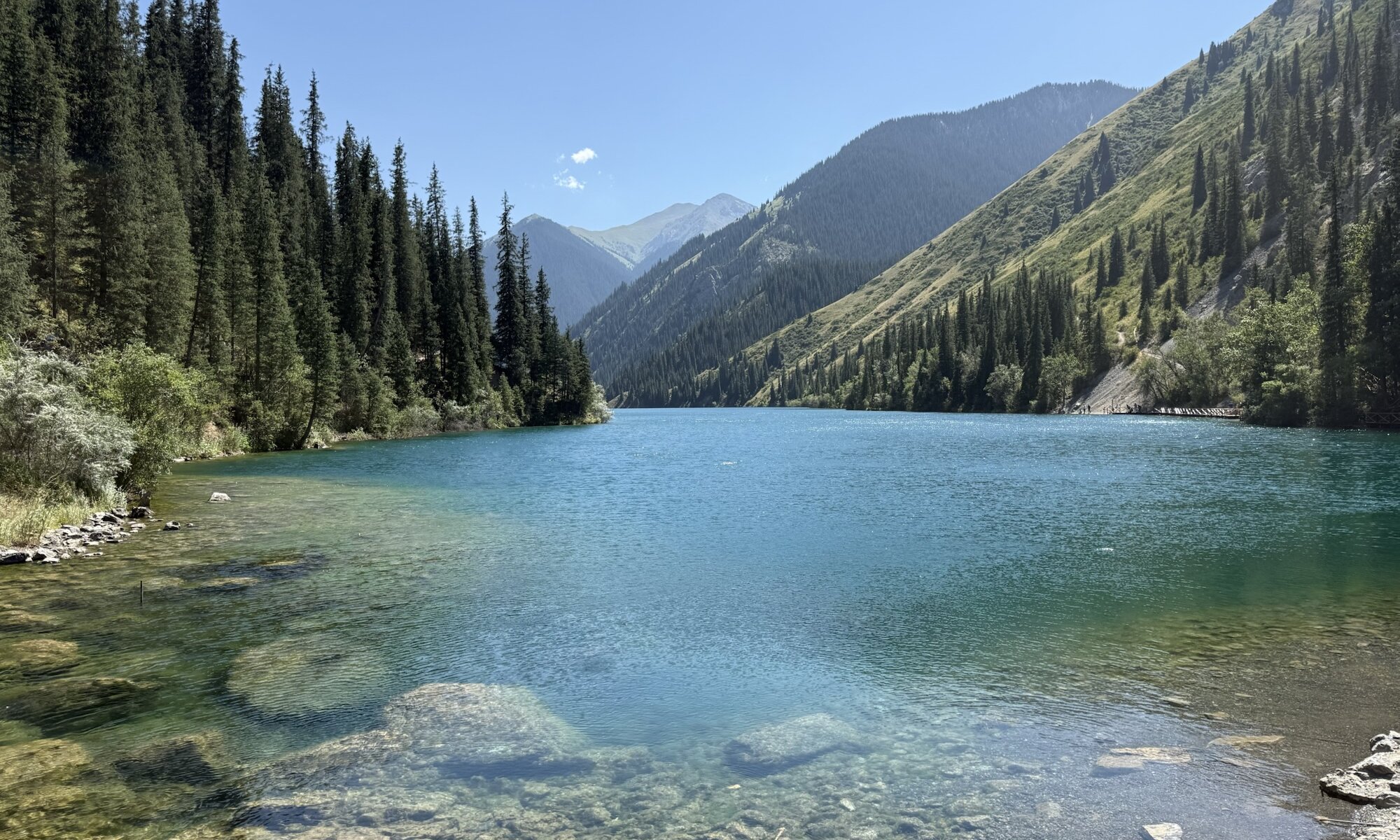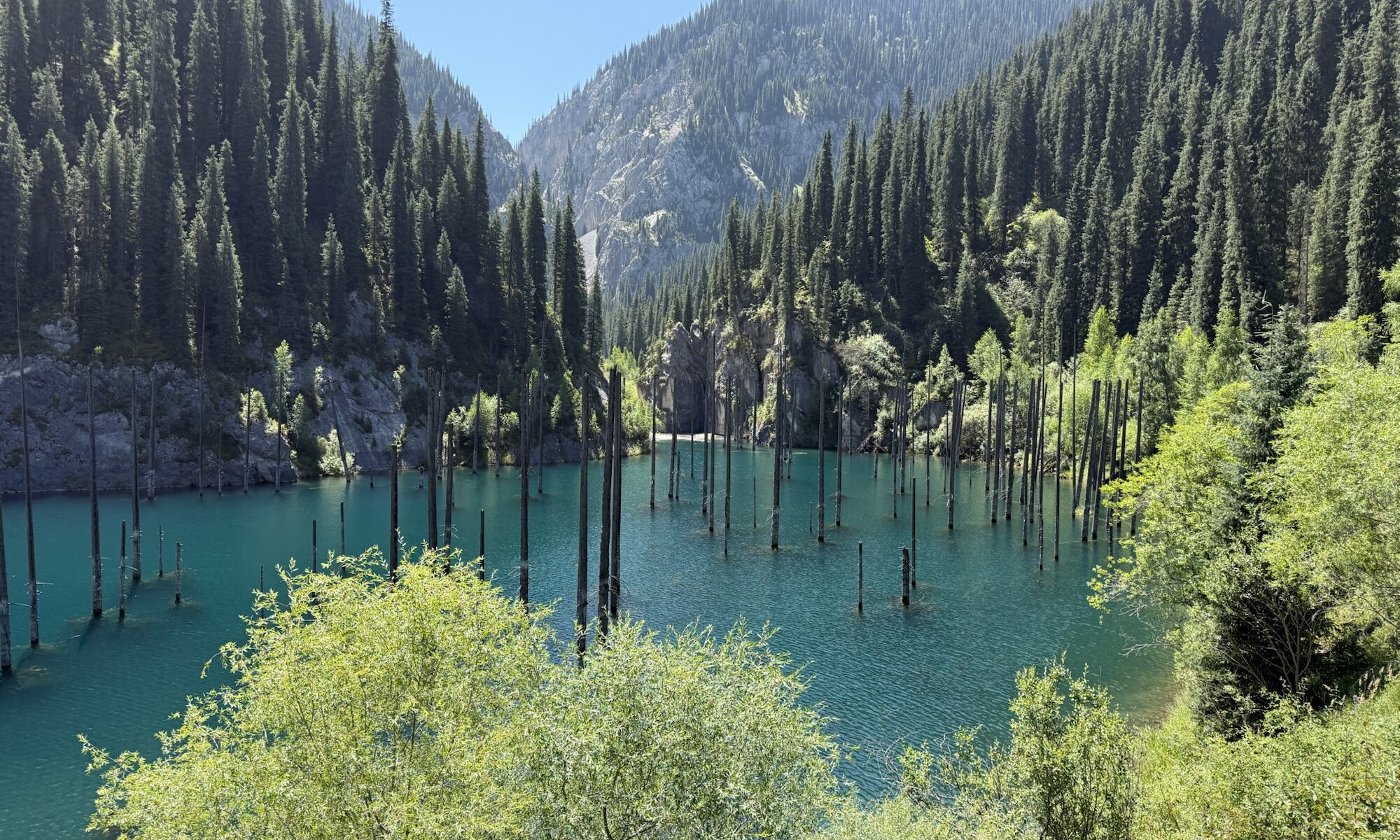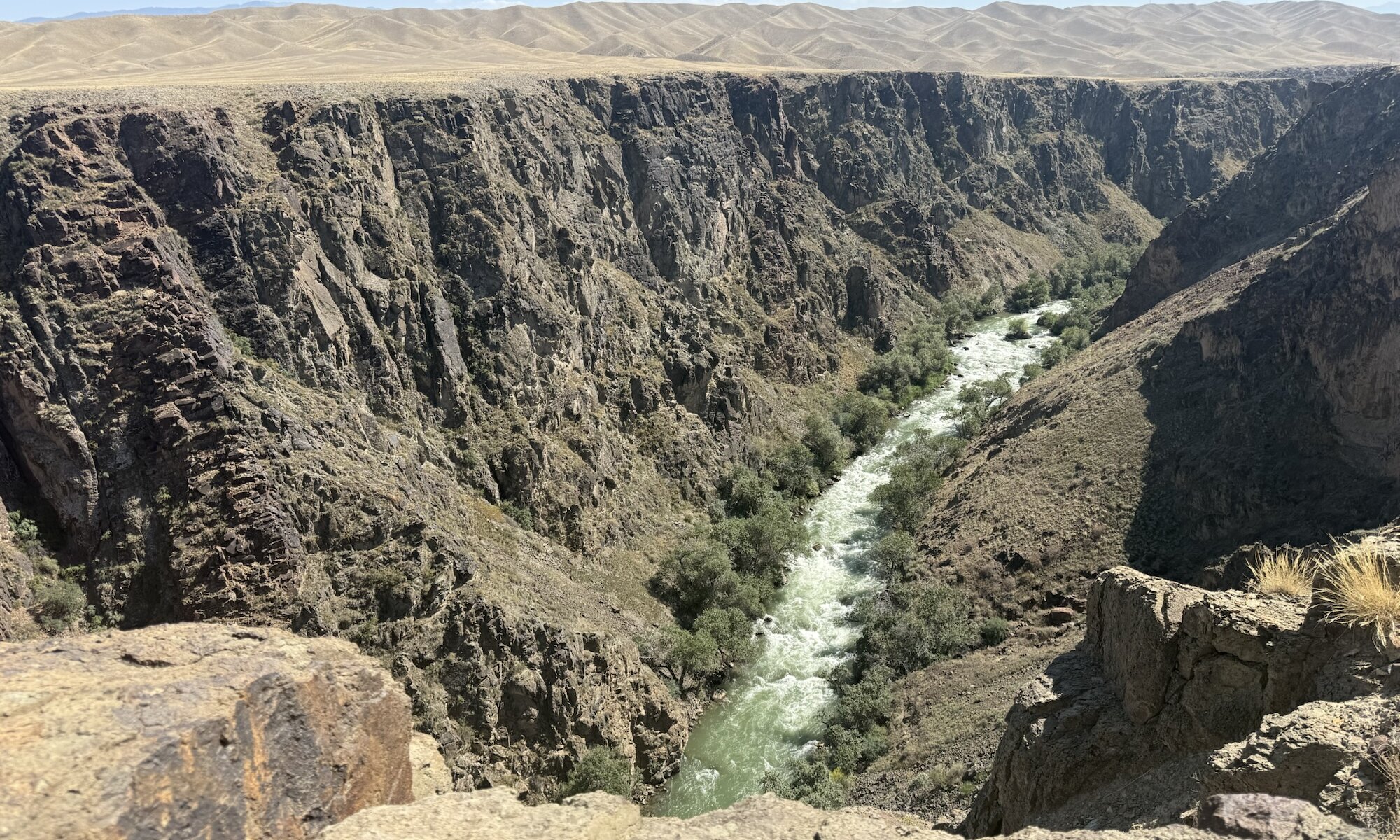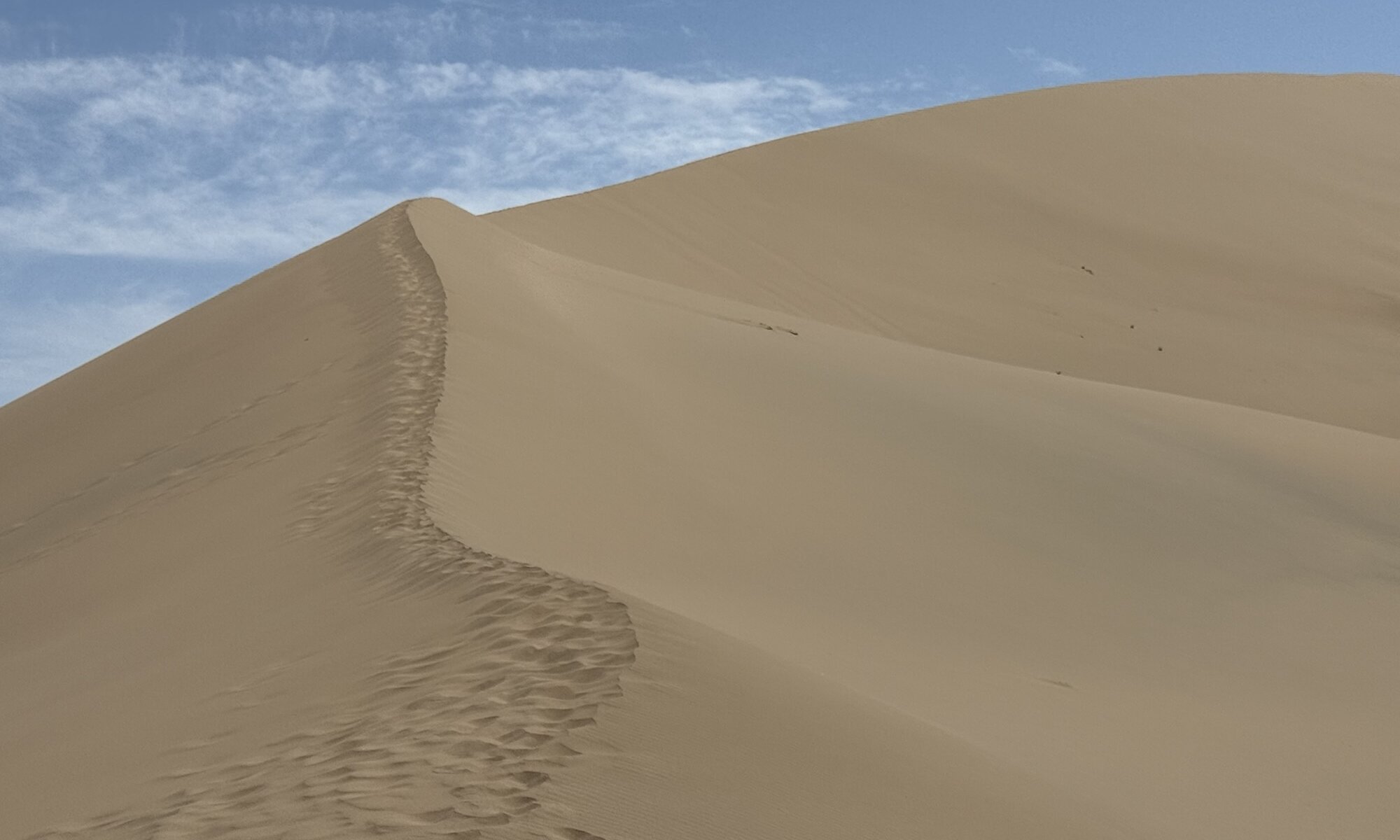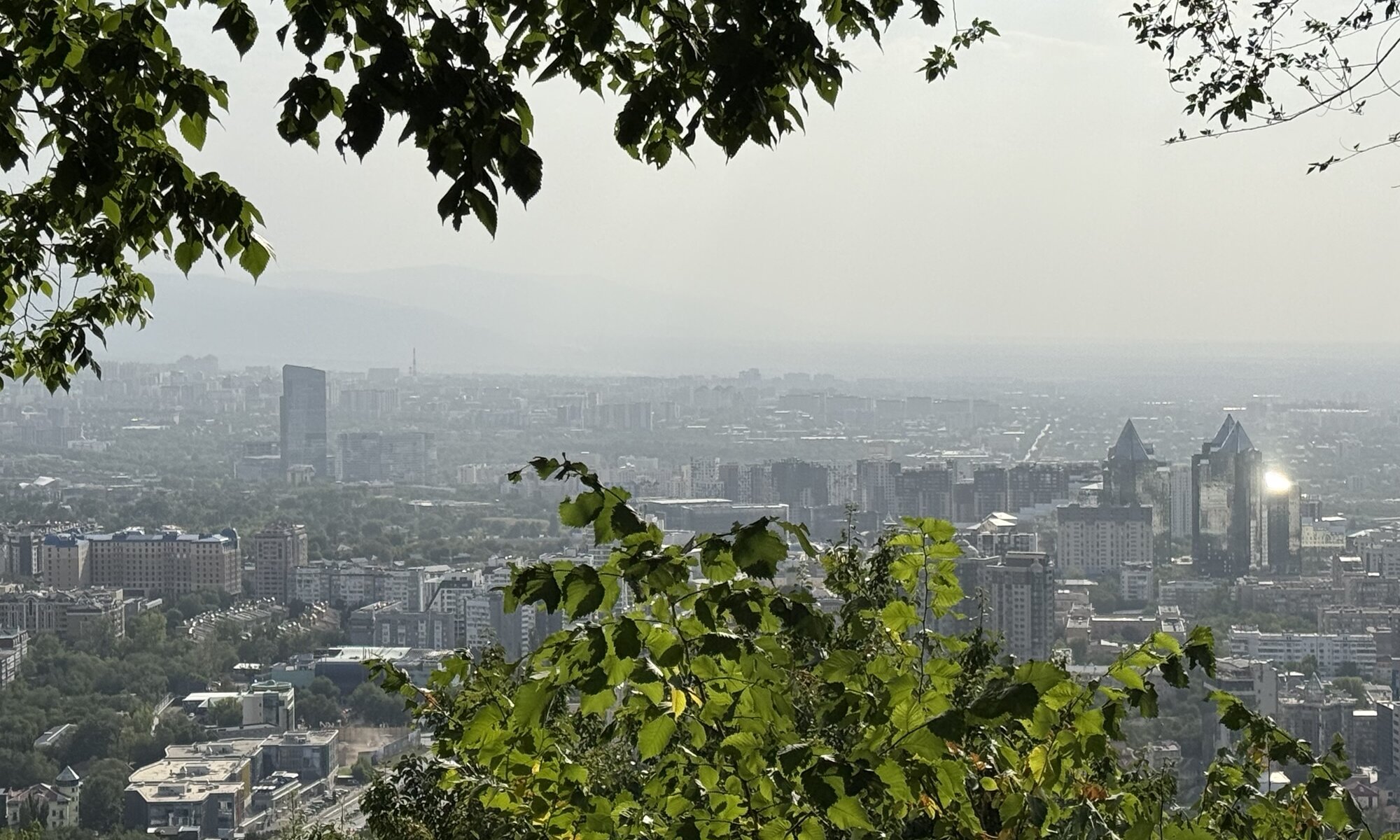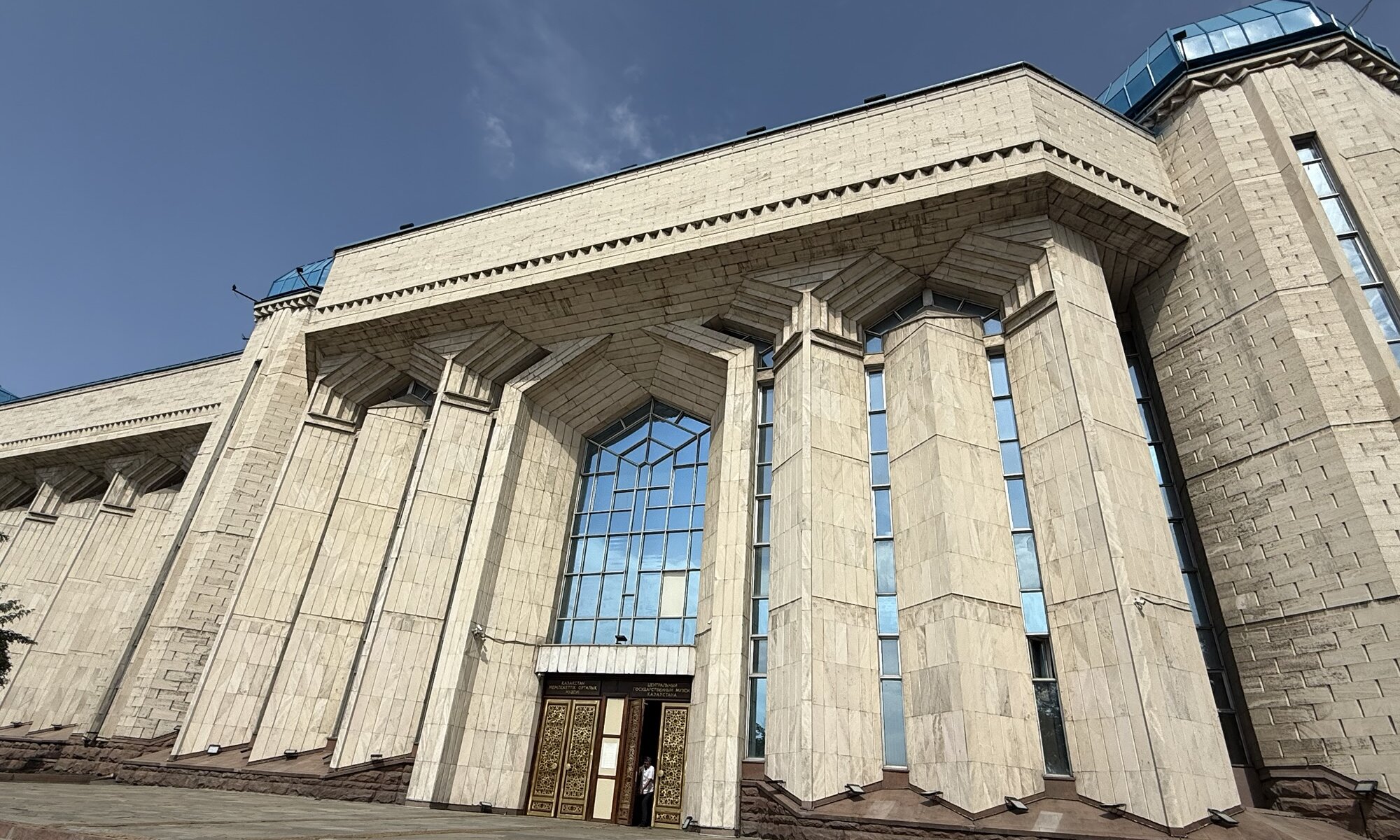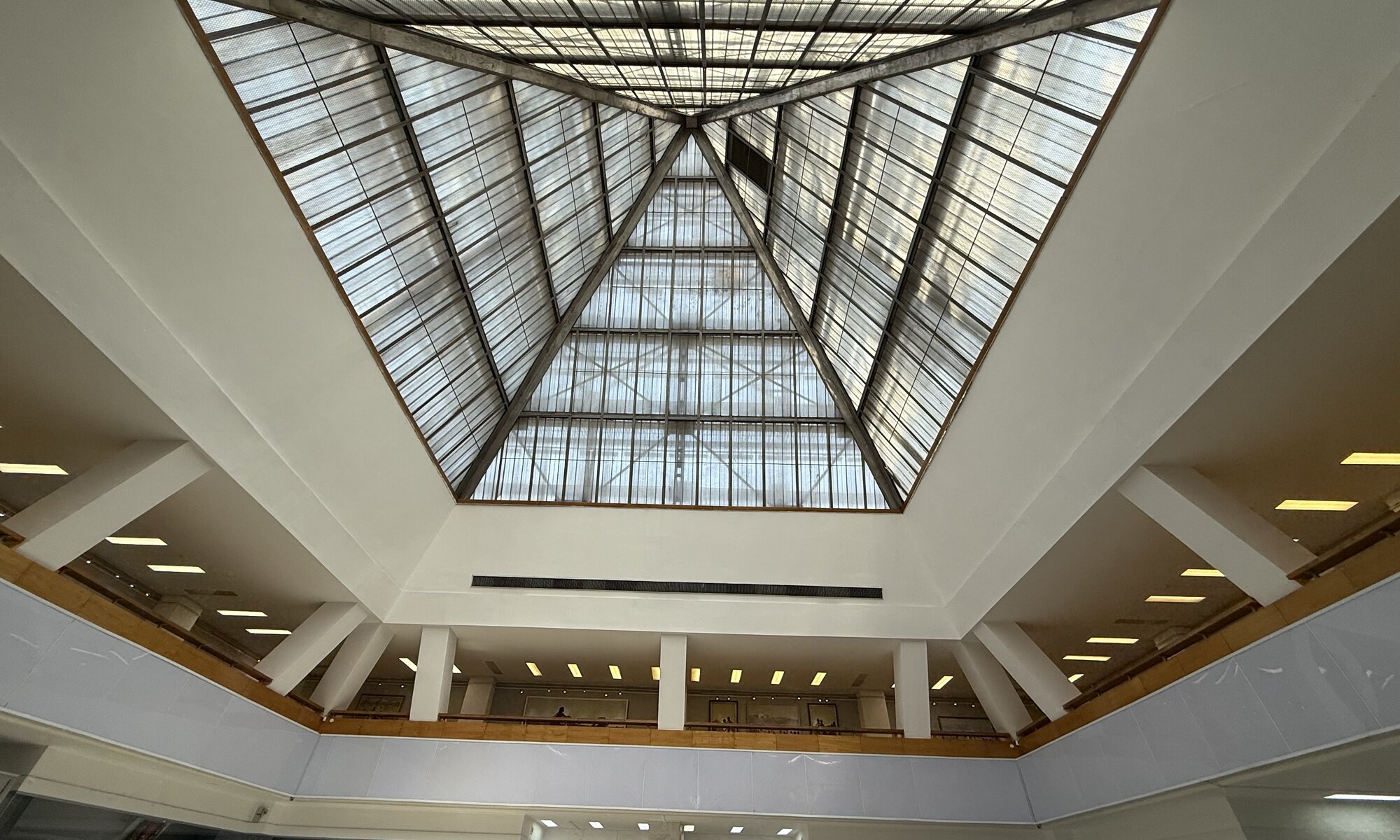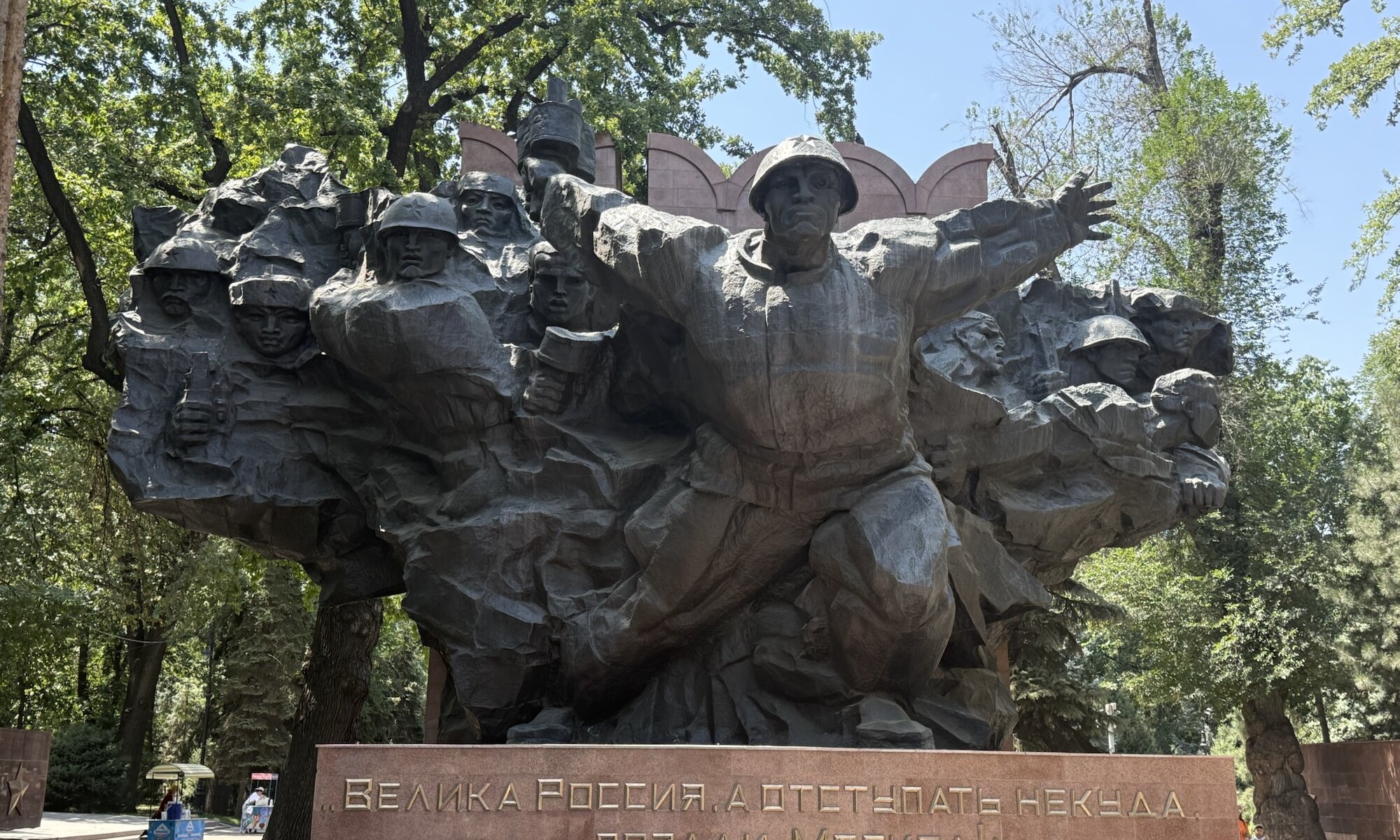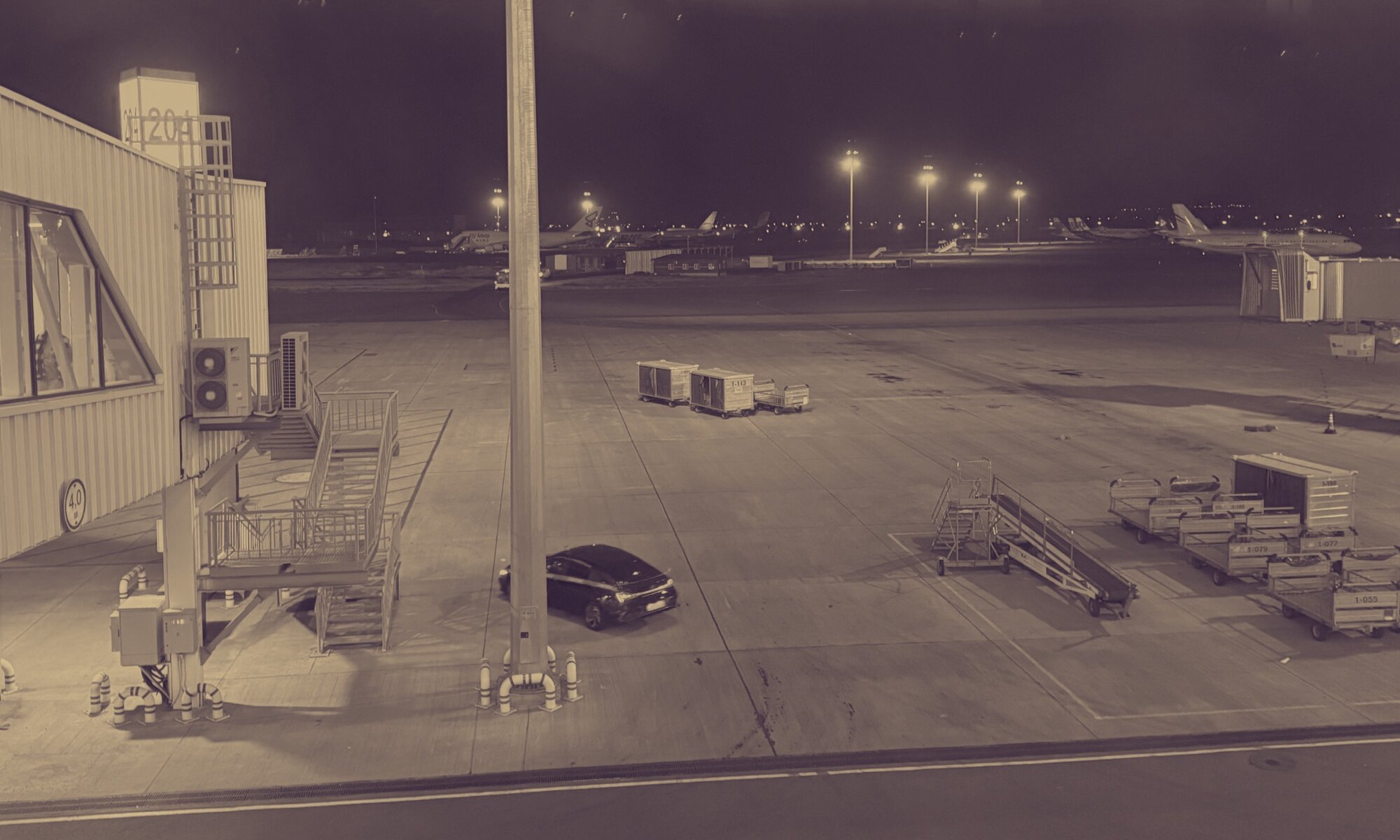It is one of Kazakhstan’s most spectacular natural wonders, often compared to the Grand Canyon but with a character all its own. Located about 200 kilometers east of Алматы, it carves through the steppe for nearly 154 kilometers, with depths reaching up to 300 meters. The canyon’s most iconic segment is the Valley of Castles, so named because the spectacular rock formations evoke the towers and walls of ancient fortresses. Walking through this section, you’ll be surrounded by red and orange cliffs that shift in hue throughout the day, turning especially vibrant at sunrise and sunset.
Continue reading “Charyn canyon”Kolsai
The two Kolsai lakes near Саты offer a truly spectacular retreat for nature lovers and adventurers. Known as Kolsai-1 and Kolsai-2, these alpine jewels are encircled by pine forests, striking peaks, and lush slopes dotted with wildflowers. Kolsai-1, the lowest and most accessible, sits at around 1,800 meters above sea level and is an ideal spot for picnics, easy walking, and canoeing. The tranquility of the lake, especially in the early morning when mist hovers over crystal-clear waters, makes it a perfect escape from the buzz of daily life.
Continue reading “Kolsai”Буханка
Located within the rugged Tien Shan mountains, Kaindy lake is one of Kazakhstan’s most surreal natural wonders. Just a short drive from the small mountain village of Саты, the lake instantly captivates with its ghostly, submerged spruce trunks and impossibly clear, blue-green waters. At over 2,000 meters above sea level, the air is crisp and tinged with pine, and the scenery feels untouched – a living postcard that hardly seems real.
Continue reading “Буханка”Black canyon
The Қара каньон near Актогай is one of Kazakhstan’s lesser-known but truly awe-inspiring natural wonders. Stretching approximately three kilometers wide and plunging to depths of up to 300 meters, the canyon dazzles with its dramatic cliffs, layered rock faces, and vibrant colors that shift throughout the day. Standing on the edge, you are greeted by sweeping vistas and a remarkable sense of isolation, far from the crowds, making it perfect for travelers craving unspoiled wilderness and jaw-dropping photo opportunities.
Continue reading “Black canyon”Altyn-Emel
Altyn-Emel National Park in Kazakhstan is a remarkable destination for travelers seeking unique natural phenomena and diverse landscapes. Spanning over half a million hectares, the park preserves a fascinating mixture of desert, steppe, canyon, and mountain environments. One of its most extraordinary features is the singing dunes – a towering mass of quartz sand approximately 1.5 kilometers long and up to 120 meters high. These dunes produce an eerie, low humming sound when the dry sand grains rub together as the wind moves them, a rare phenomenon found only in a few places worldwide. The sound can carry for kilometers, creating a surreal atmosphere for visitors.
Continue reading “Altyn-Emel”Көктөбе
Kök-Töbe, often called the ‚green hill‘, rises over Алматы as a beloved symbol and vantage point for locals and visitors alike. Historically, this hill has served various purposes, from being a gathering spot before the Soviet era to acquiring its current reputation as a recreation area. In the 1960s, city leaders transformed it into a park, adding infrastructure that made it accessible and inviting. The installation of the cable car in the mid-1960s marked the start of its popularity, with further revitalization projects in the 2000s expanding both its attractions and amenities.
Continue reading “Көктөбе”Central State Museum
If you’re exploring Алматы, the Central State Museum of Kazakhstan is one stop that shouldn’t be missed. This grand museum sits in a leafy area, and its imposing blue-domed structure makes it instantly recognizable. As you approach, you’ll notice the constant buzz of school groups, travelers, and locals alike – all eager to learn more about the country’s rich heritage. The museum’s halls are vast and welcoming, providing a refreshing escape from the city’s hustle and heat.
Continue reading “Central State Museum”Kasteyev
The Abylkhan Kasteyev State Museum of Arts in Алматы is the largest and most prominent art museum in Kazakhstan. Established officially in 1976, it was named in honor of Abylkhan Kasteyev, a celebrated Kazakh painter and founder of the national school of painting. The museum’s collection exceeds 23,000 works, encompassing an extensive range of Kazakh historic and contemporary art, Soviet-era pieces, Russian art from the 17th to 20th centuries, as well as Western European and East Asian art. Its holdings include paintings, sculptures, ceramics, textiles, and folk applied art, making it a comprehensive showcase of Kazakhstan’s rich cultural heritage alongside global artistic traditions.
Continue reading “Kasteyev”28 Panfilowzy
The Panfilov park in Алматы is one of the city’s most beloved and historically rich green spaces, spanning around 18 hectares in the city center. It dates back to the late 19th century, originally established as a city garden over an old cemetery site. Over decades, the park’s name evolved several times – from Starokladbischensky park to Pushkin garden and Lenin park – before receiving its current designation in 1942. This renaming honored the heroic 28 Panfilov guardsmen, soldiers from Алматы and nearby regions who fought valiantly during World War II.
Continue reading “28 Panfilowzy”Almaty International Airport
Touching down at Almaty International Airport is often the first experience many travelers have in Kazakhstan, and it’s one that leaves a strong impression. The airport itself, situated not far from the city center, is framed by the spectacular Tien Shan mountains – when the weather is clear, the view from the terminal windows is truly breathtaking. Despite serving as the main gateway for international visitors and domestic travelers alike, the airport has a notably calm and even friendly atmosphere, especially when compared with the frantic pace of larger global hubs.
Continue reading “Almaty International Airport”